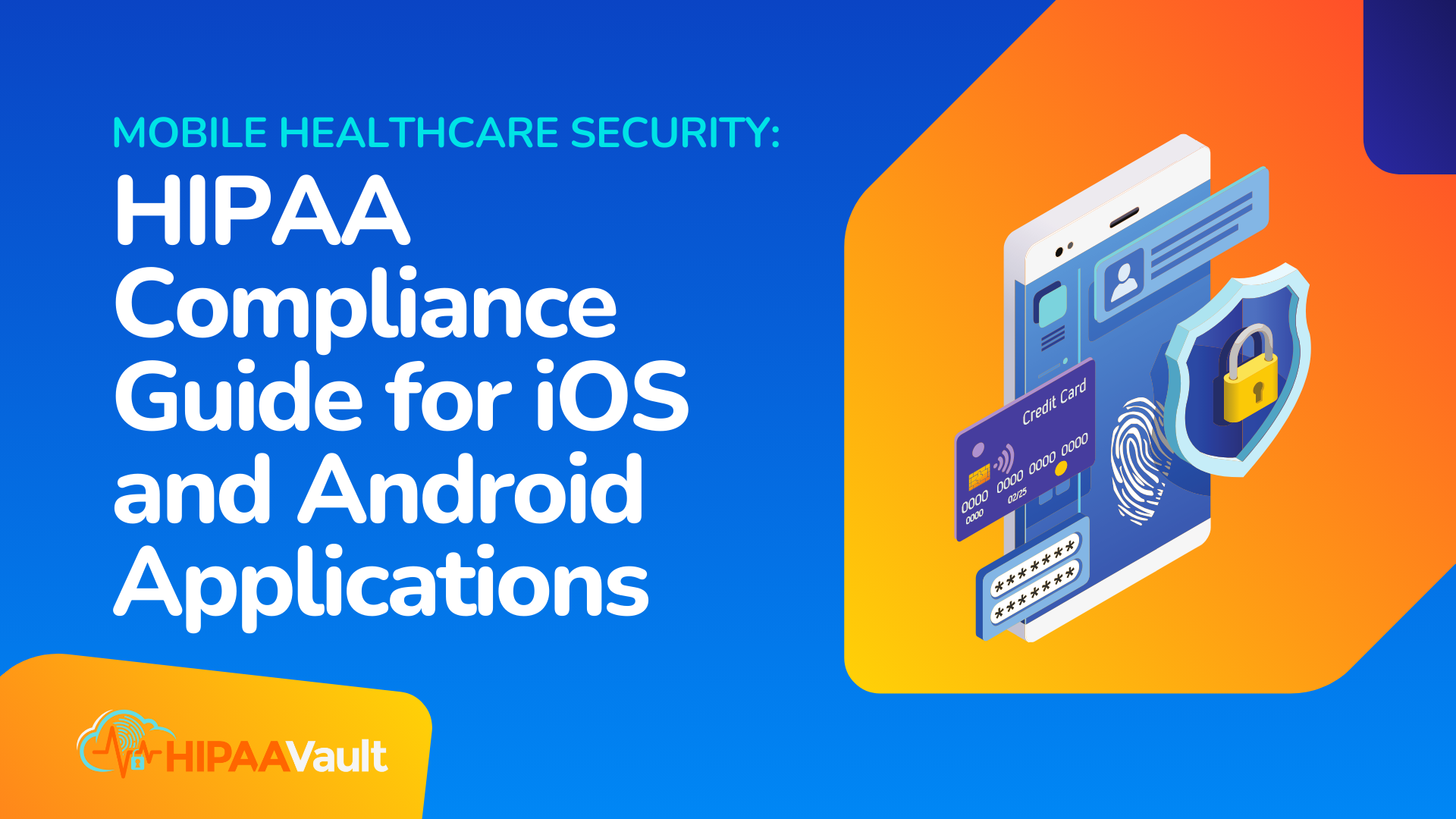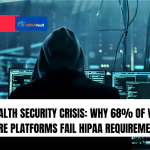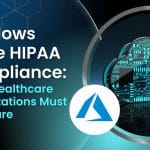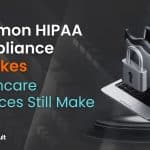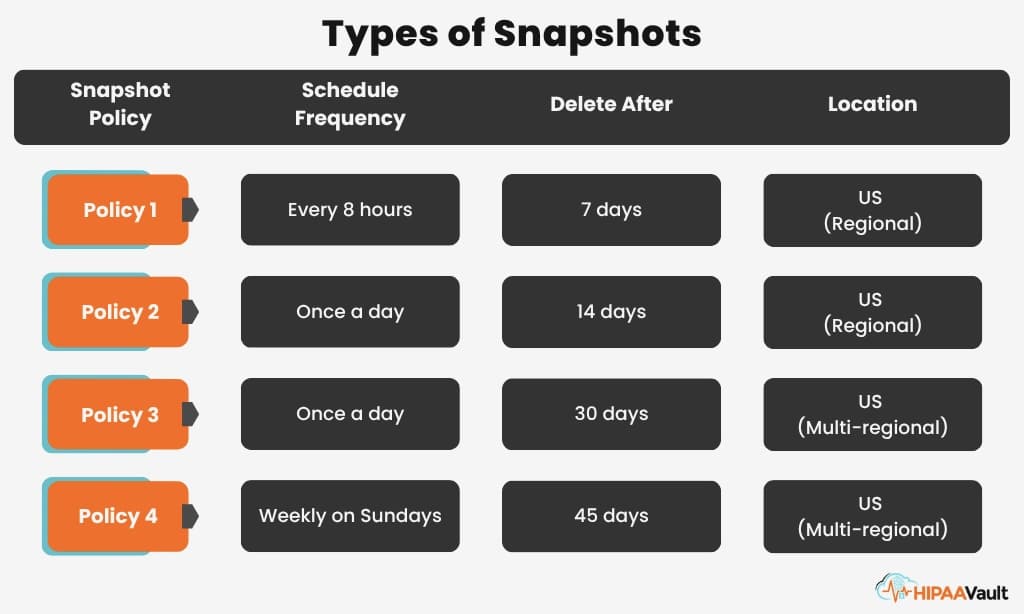The shift to mobile-first healthcare has empowered patients and providers alike, offering on-demand access to medical records, telehealth visits, and remote monitoring via smartphones and tablets via HIPAA Vault’s Cloud Hosting. Yet with this convenience comes a critical responsibility: ensuring that every line of code and every data transmission in your iOS or Android app aligns with HIPAA’s rigorous Privacy and Security Rules. In this guide, we’ll walk through the real-world steps that mobile app developers and healthcare IT teams must take to build—and maintain—HIPAA-compliant mobile solutions.
Understanding the Stakes
Imagine a patient using your app to upload their blood glucose readings or receive mental health counseling notes. That data is protected health information (PHI) under HIPAA, and any breach can carry civil penalties of up to $50,000 per violation (capped at $1.5 million annually), not to mention irreparable damage to your organization’s reputation. Beyond legal liability, patients trust mobile apps to safeguard their most personal health data, making security a strategic imperative—not an afterthought.
Embedding Security from Day One
Security isn’t something you bolt on after development—it must be woven into your mobile app’s DNA. Start by conducting a thorough risk assessment—guided by NIST SP 800‑66 Rev 2—that maps every touchpoint where PHI could be exposed, from user input to backend APIs. This analysis will shape your policies, procedures, and technical requirements, ensuring that encryption, authentication, and access controls address the most pressing threats.
Safeguarding Data In Transit and At Rest
When your app transmits PHI, use TLS 1.2 or higher, coupled with certificate pinning to prevent man-in-the-middle attacks. On-device storage is equally critical: iOS apps can leverage the Data Protection APIs (e.g., NSFileProtectionComplete) to encrypt files with the user’s passcode, while Android apps should utilize the Android Keystore System with AES‑256 encryption. By enforcing robust encryption at every layer, you close off easy avenues for attackers to intercept or tamper with patient data citeturn0search4turn0search8.
Controlling Who Sees What
HIPAA demands granular access controls. Implement multi-factor authentication—using Face ID/Touch ID on iOS or BiometricPrompt on Android—to verify users, and maintain strict session management so that tokens expire or require re-authentication after inactivity. On the development side, avoid hardcoded credentials by integrating secrets management solutions that keep API keys and certificates out of your codebase.
Protecting the App Environment
Even the most secure code can be undermined if it runs on a compromised device. Integrate jailbreak and root detection libraries to detect unauthorized environments and, if detected, alert the user or disable sensitive features. For enterprise deployments, consider Mobile Device Management (MDM) platforms that enforce device-level policies, remote wipe capabilities, and secure containers for storing PHI.
A Secure Development Lifecycle
A controlled, DevSecOps-driven pipeline helps embed quality and security checks into every build and aligns with HIPAA Compliance for Developers. Integrate static code analysis (SAST) tools like Semgrep or MobSF to flag insecure API usage, and pair this with regular dynamic testing—both automated and manual penetration tests. Don’t forget to generate a Software Bill of Materials (SBOM) for each release, as recommended by the FDA and the 21st Century Cures Act, to track third-party libraries and components for vulnerabilities.
Meeting FDA and Industry Standards
If your app qualifies as a medical device under FDA guidance, you’ll need to submit premarket documentation that includes threat modeling and a postmarket vulnerability management plan. Align your security practices with the OWASP Mobile Application Security Verification Standard (MASVS) and testing procedures from the OWASP Mobile Security Testing Guide (MASTG) to satisfy both HIPAA auditors and regulators.
Monitoring, Logging, and Incident Response
Continuous visibility into app activity is vital. Ship logs—user authentications, PHI access, error events—to a HIPAA-compliant SIEM, where anomaly detection can spot repeated failed login attempts, unusual data exports, or spikes in API errors. Define your incident response workflows in advance so that, in the event of a breach, you can isolate affected devices, notify impacted patients, and report to HHS OCR within the required timeframe.
Vendor Management and BAAs
Many apps rely on third-party services—for analytics, authentication, or messaging. Any vendor with access to PHI must sign a Business Associate Agreement (BAA) that clearly outlines security responsibilities, breach notification timelines, and audit rights. If you also manage web-based integrations, consider our HIPAA-Compliant WordPress Hosting for seamless vendor coordination. Vet each vendor’s compliance posture through questionnaires, certifications, and, if possible, penetration test reports.
Sustaining Compliance Over Time
HIPAA compliance is not a one-off project but a continuous journey. Schedule quarterly vulnerability scans, annual risk re-assessments, and periodic policy reviews. Conduct regular security training for your development and operations teams to reinforce best practices—and adapt quickly to new threats or regulatory updates.
Conclusion
Developing HIPAA-compliant mobile healthcare applications demands more than checkboxes—it requires an integrated approach that spans people, processes, and technology. By embedding risk assessments, encryption, access controls, secure coding practices, and continuous monitoring into your mobile app lifecycle, you’ll protect patient data and maintain regulatory peace of mind.
Ready to fortify your iOS and Android healthcare apps with enterprise-grade security? Contact us today and partner with HIPAA Vault to achieve unwavering HIPAA compliance.


